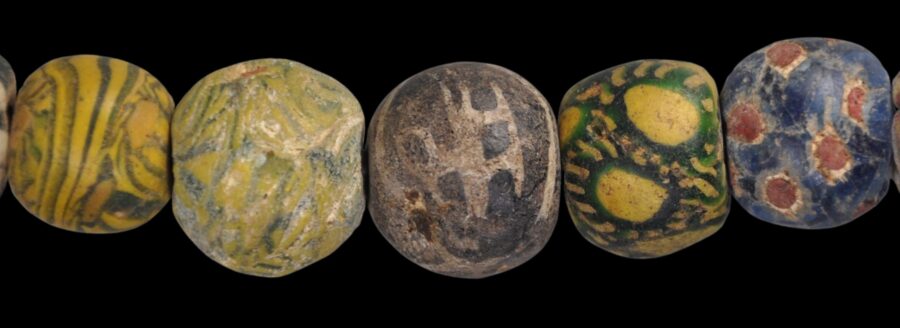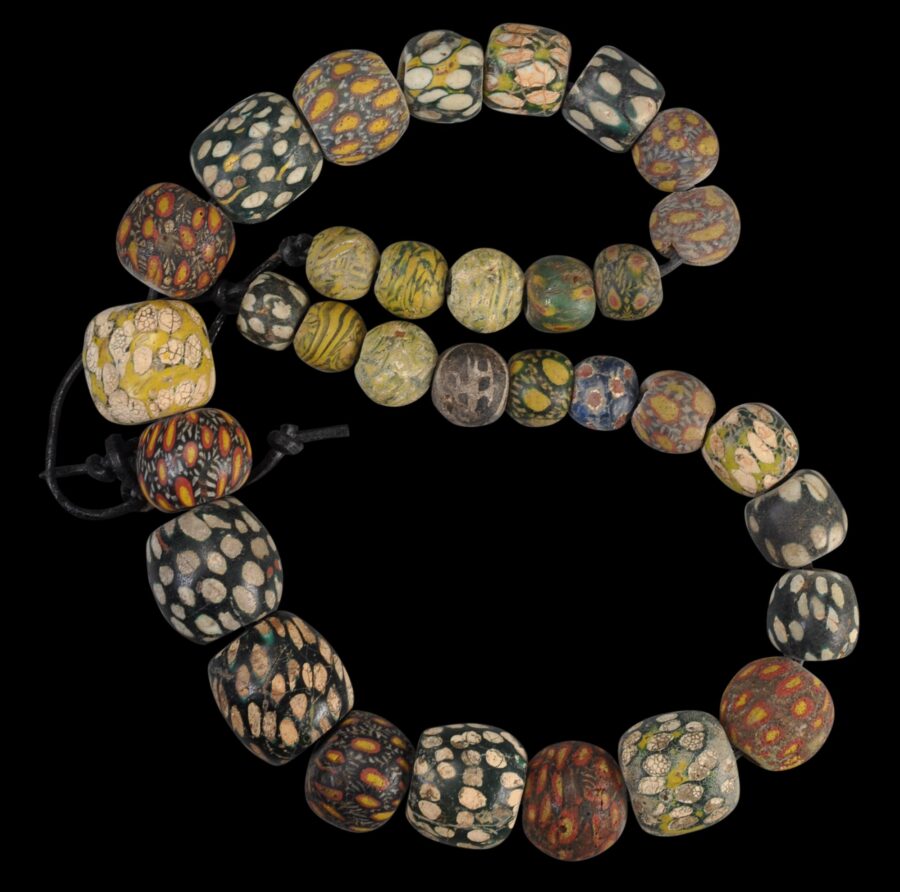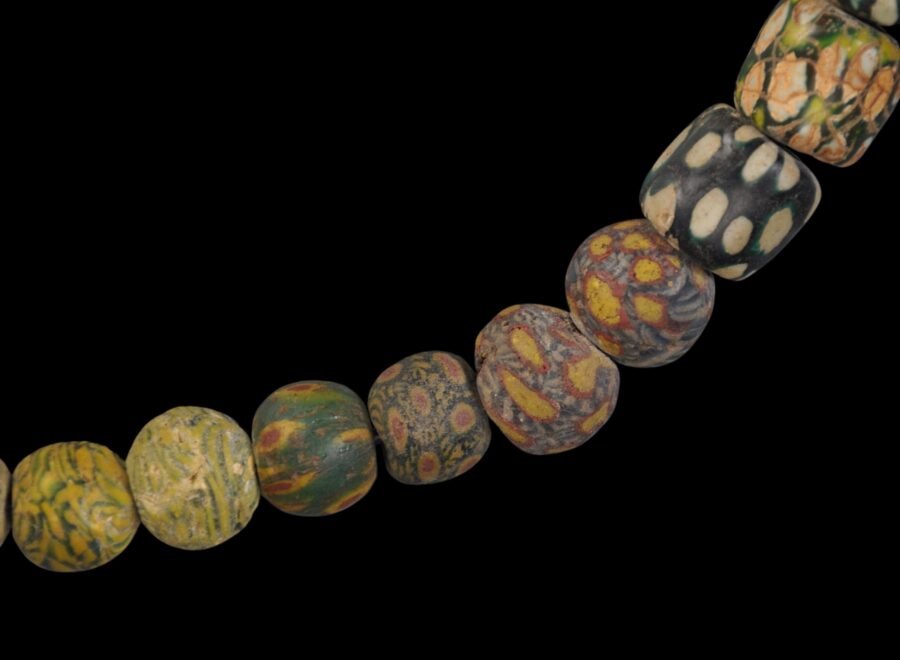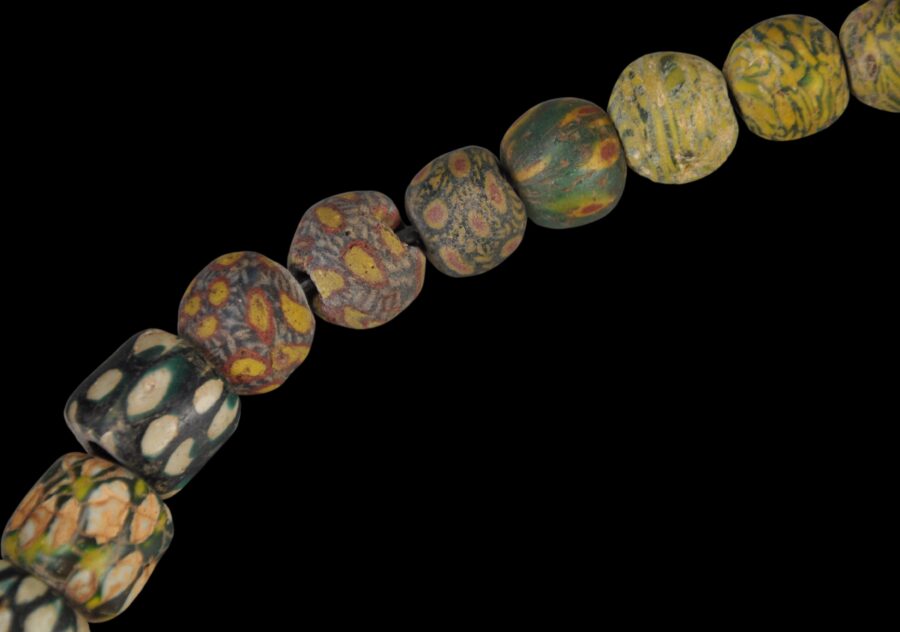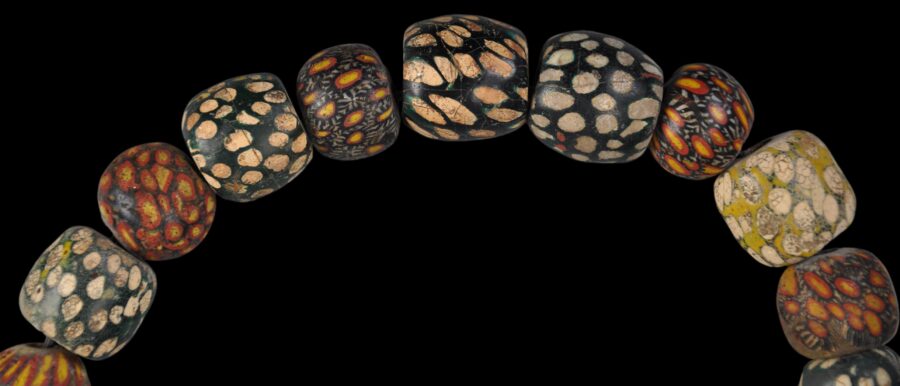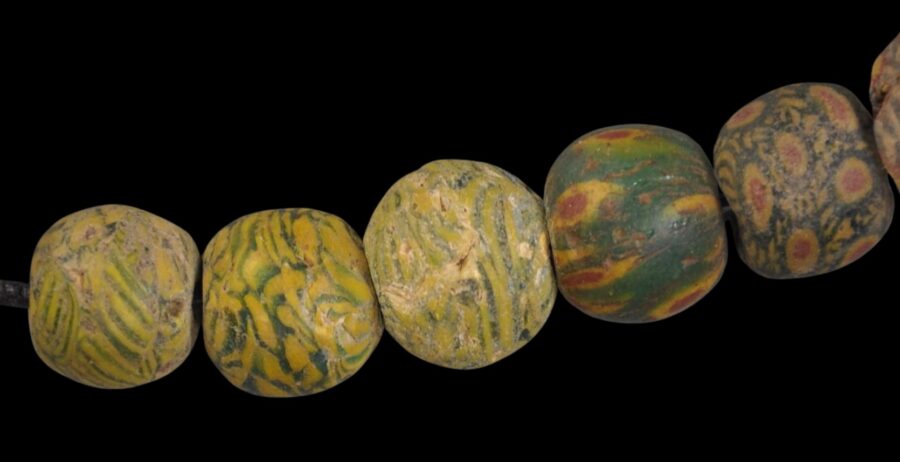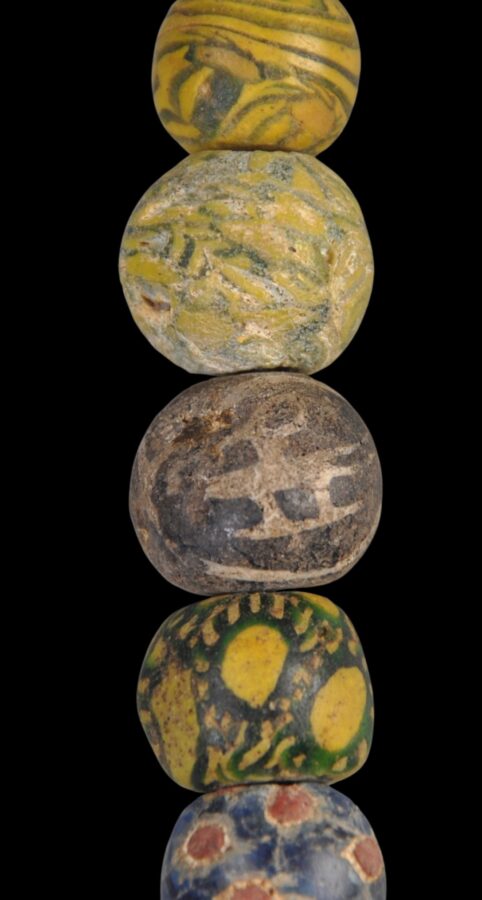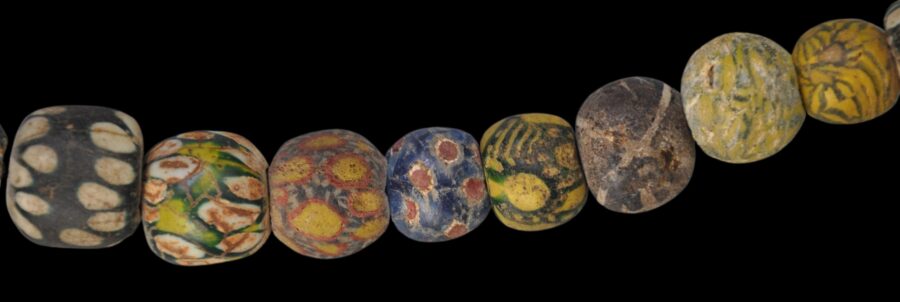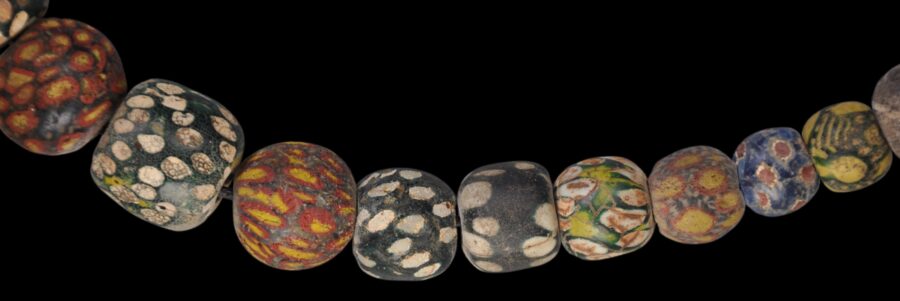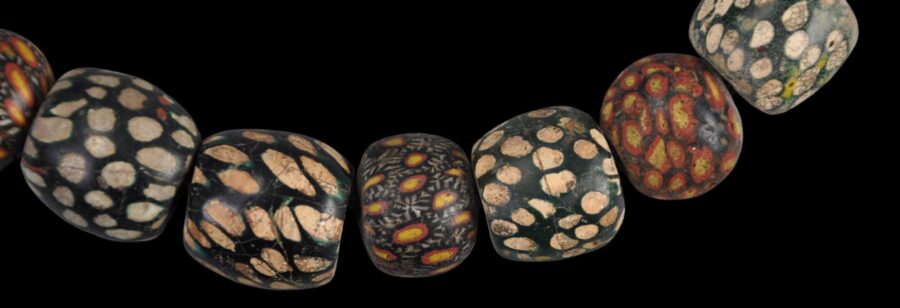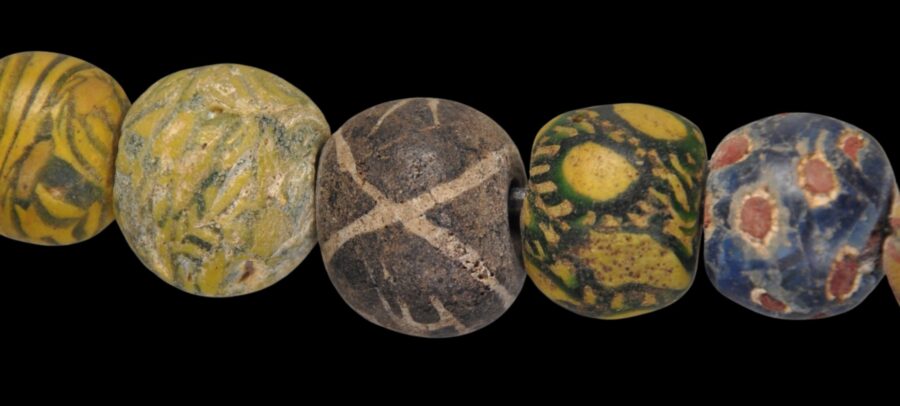Enquiry about object: 9811
Superb, Rare Strand of 32 Ancient, Varied, East Javanese ‘Jatim’ Glass Beads
East Java, Indonesia 600-800AD
length: 52cm, diameter of the largest bead: 2.4cm, weight: 273g
Provenance
private collection, Canada; acquired in the US in the early 1980s
This strand of 32 graduated millefiori and mosaic glass beads is from East Java, Indonesia, and dates to the around 600-800AD. Such beads have become known as ‘Jatim’ beads, an amalgam of Jawa Timur (East Java) which is where the beads are believed to have been made. It is believed that the beads are inspired by post-Roman Islamic beads that would have been traded to Java in ancient times by Arab traders and then copied locally. Sometimes, Jatim beads are referred to as ‘Majapahit’ beads, but the Majapahit kingdom, which was based in East Java, dates to the 13th-16th century and so post-dates these beads by at least several centuries.
Included in this strand is one rare bead in blue monochrome that has been trailed in white glass with both bird motif and sunburst motifs. According to Liu (1995, p. 93), this type is a particularly ‘famous, ancient’ bead type from Indonesia.
Monochrome or polychrome, Jatim beads are distinguished by a thin layer of mosaic canes or pre-formed stripes and patterns over a monochrome core (Liu, 1995, p. 92).
As is typical of Jatim beads, those with a more yellow hue are most susceptible to devitrification, a characteristic of this stand which tends to be authenticating.
It is likely that Jatim beads has various functions. Java at the time was home to both Hinduism and Buddhism. These two religions co-existed and both call for the use of rosaries or related beads strands and it seems that Jatim beads might have been used for this purpose. They might also have been purely decorative and being expensive, would have served as a show of wealth, power and prestige. They also served as grave goods.
A final odd element in the story of Jatim beads is that at some point (probably between 600 and 900 AD), the beads were traded from East Java to Palau Island, the western-most island in the Carolinas an island archipelago in Micronesia, in the Pacific Ocean, where they circulated as an effective store of wealth and means of exchange among the islanders. They became, and still are, important social status, heirloom items. Interestingly, the islanders consider only the Jatim beads that have been on their island for hundreds of years or more and which have a ‘known’ history to be valuable and appropriate for rituals. Jatim beads, even if genuine and over a thousand years old but brought recently from East Java are not considered to have the same ‘power’. (Francis, 2002, p. 190).
Counterfeit examples of Jatim beads abound, but this is a remarkable collection of varied, genuine beads that dates to around the 7th-9th century. Most of the beads are in excellent condition. There is a good variety of colours and decoration.
References
Francis, P., Asia’s Maritime Bead Trade: 300 BC to the Present, University of Hawai’i Press, 2002.
Green, A., Southeast Asia: A History in Objects, Thames & Hudson/British Museum, 2023.
Liu, R.K., A Universal Aesthetic: Collectible Beads, Ornament, Inc, 1995.
Richter, A., The Jewelry of Southeast Asia, Thames & Hudson, 2000.
Sherr Dubin, L., The Worldwide History of Beads, Thames & Hudson, 2009.



